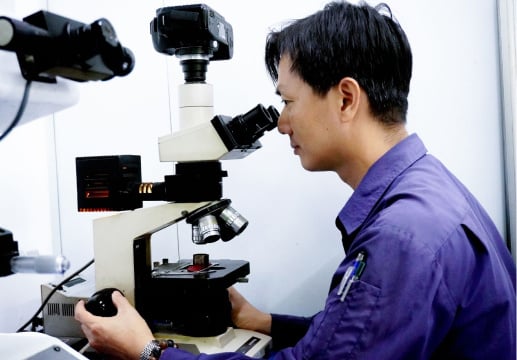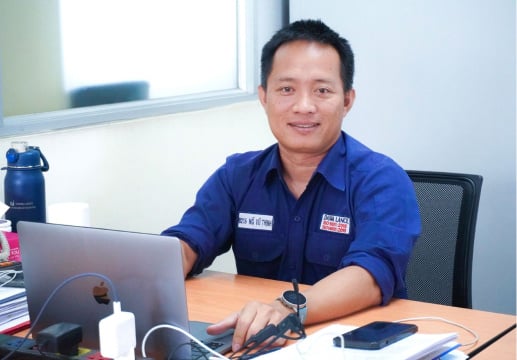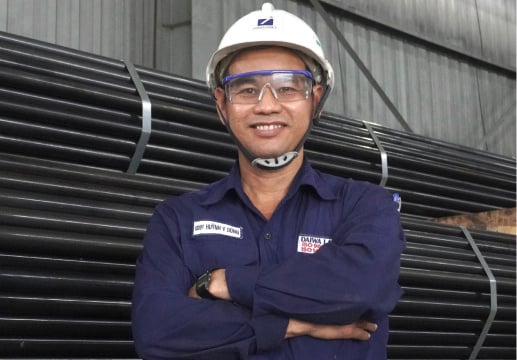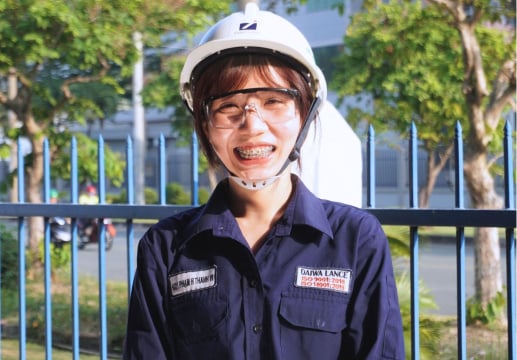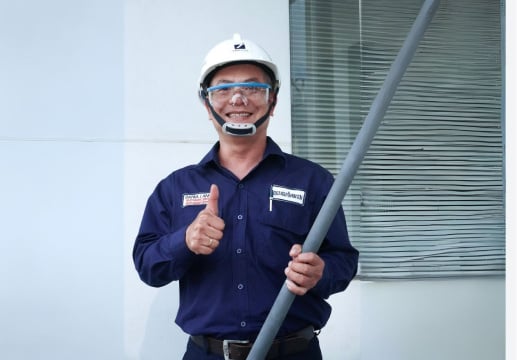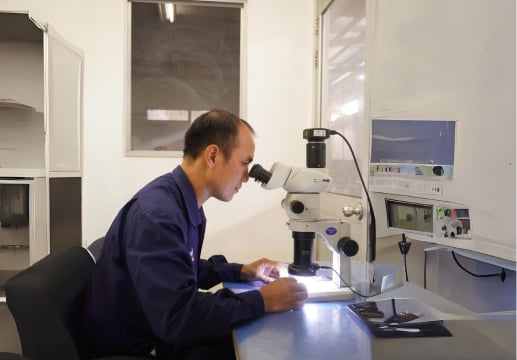To produce high-quality, corrosion resistant alloy and stainless steel, the secondary steel refining process must be conducted under extremely harsh conditions, particularly at temperatures ranging from 1600°C to 1800°C and under high vacuum. In this context, the Heavy Concrete Lance is an indispensable and crucial tool in vital processes such as VOD and VAD process.Its super-thick refractory concrete coating ensures safe, efficient, and precise refining under extreme vacuum and temperature conditions in the production of alloy and stainless steel.
What is The Heavy Concrete Lance?
Heavy Concrete Lances as known as refractory-lined oxygen or injection lances, are special pipes used to blow oxygen or inert gas in the VOD process or the VAD process during the production of alloy and stainless steel.
Heavy Concrete Lance manufactured by Daiwa Lance International Co., LTD is a type of lance pipe made from heat-resistant calorized steel pipe with a super thick refractory coating, 15 to 30 times thicker than conventional coatings. This coating provides excellent resistance to heat and thermal shock.
The structure of Daiwa Heavy Concrete Lance stands out with:
- The core is made of heat-resistance calorized steel pipe, which can tolerate temperatures over 2,000oC.
- The outer layer of special thick refractory coating, including materials like aluminum oxide plus silica (AL2O3)

How The Heavy Concrete Lance Works in VOD and VAD?
The Heavy Concrete Lance is an indispensable tool in the secondary refining process for producing high-quality alloy steel and stainless steel, particularly in two key procedures: Vacuum Oxygen Decarburization (VOD) and Vacuum Arc Degassing (VAD).
In the VOD process
Primary Function
The lance is used to blow pure oxygen gas directly onto the surface or into the molten metal bath.
Mechanism of Action
- In a vacuum environment, the oxygen blowing helps to reduce the carbon content to an extremely low level to produce stainless and alloy steels.
- The super-thick refractory concrete coating of the Heavy Concrete Lance protects the inner steel pipe from extremely high temperatures from 1600oC to 1800oC and the strong chemical corrosion from slag rich in Cr2O3, NiO and FeO. It also maintains the integrity of the pipe under vacuum pressure conditions.
- The lance ensures a stable and precise flow of oxygen, which is a critical factor for the efficiency of the decarburization reaction and the quality of the final product.
In the VAD process
Primary Function
The lance is typically used to blow inert gas such as argon.
Mechanism of Action
- The inert gas is blown into create intense stirring in the molten metal. This stirring is essential for homogenizing the temperature and chemical composition of the steel batch and for optimizing the degassing process under vacuum.
- Similar to VOD, the refractory coating of the Heavy Concrete Lance ensures the pipe does not wrap or burn through due to high heat and pressure, allowing the stirring process to be continuous and safe.
Daiwa Heavy Concrete Lance safely conveys both oxygen and inert gases like argon depending on the refining process.
What Makes Heavy Concrete Lances Suitable For Use During Alloy and Stainless Steel Production?

Here are the key factors:
High-temperature resistance
- Alloy and stainless steel production occurs at 1600 - 1800°C.
- The refractory concrete layer is made from high-alumina, magnesia, or zircon-based materials, which can resist melting and maintain strength at these temperatures.
- The thick refractory layer insulates and protects the metal pipe inside from heat damage.
Excellent thermal insulation
- The concrete layer has low thermal conductivity, reducing heat transfer to the metal tube and support structures.
- This prevents the steel pipe from warping or softening under high thermal load.
- It also stabilizes gas temperature and pressure for consistent injection performance.
Chemical and slag corrosion resistance
- During alloy and stainless steel production, slags rich in Cr₂O₃, NiO, FeO, and other oxides are highly corrosion.
- Heavy concrete lances use refractory aggregates that resist these oxides and prevent chemical attack.
- This property significantly extends the service life of the lance.
Mechanical strength and erosion resistance
- The heavy concrete layer is dense and strong, so it can resist erosion from high-velocity oxygen jets and splashing molten metal.
- It also absorbs mechanical shocks from handling and from pressure fluctuations inside the pipe.
Safety and process reliability
- The thick concrete layer prevents burn-through or explosion if the metal pipe inside is exposed to molten steel.
- It ensures stable, continuous operation, reducing downtime and risk to workers and equipment.
Conclusion
The Heavy Concrete Lance is an indispensable tool in the production of alloy and stainless steel. Its super-thick refractory concrete coating provides superior high-temperature resistance, excellent thermal insulation, chemical corrosion resistance from slag, along with high mechanical strength and erosion resistance. These properties ensure the refining process is safe, stable and efficient, extending the lance’s service life and minimizing operational risks.
For optimal performance and superior reliability, we highly recommend the Heavy Concrete Lance manufactured by Daiwa Lance International Co., Ltd. With experience and advanced technology, Daiwa Lance is committed to supplying products that precisely meet the rigorous demands of the global steel industry.
- Category:
- Daiwa Lance Products
- Keyword:
- steel furnace











